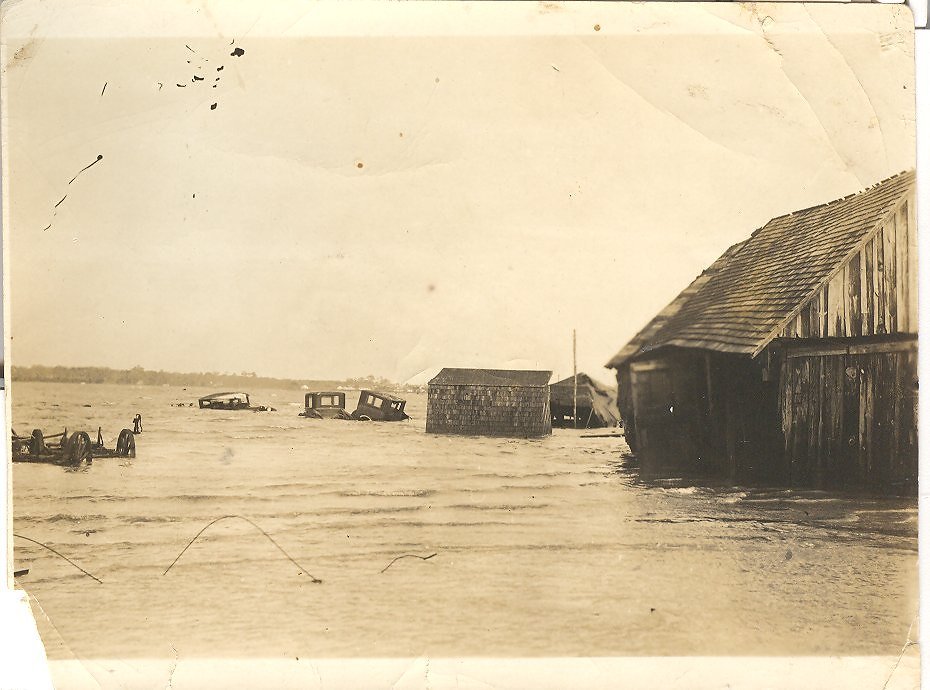2024 Winning Essay by Daniel Karcheuski
Storm of 1933; Collection of Mary Mason
Though wildfires burn thousands of acres of forests every year, more lush and fertile forests rise from the ashes. Though brutal winter snowstorms make barren landscapes, many colorful flowers bloom in the spring thaw. Though wounds to the body are evidence of injury, the body heals and repairs itself to be stronger than it was before. Destructive forces can be devastating but can encourage greater beauty in their wake. Pablo Picasso, renowned artist of the early 1900s, recognized this, saying that “every act of creation is first an act of destruction.”
The flourishing Ocean City of today was born from a catastrophic hurricane, known as the Storm of 1933. The Storm threw an onslaught of violent winds, roaring waves, and thunderous rain at the quaint fishing town that stood between the Assawoman Bay and the Atlantic Ocean. The streets of the downtown area were buried by displaced sand. Cars and boats were swept out to sea. Homes were flooded by the high tides. The Boardwalk was stripped of its wooden planks. The railroad that once transported goods and tourists into Ocean City was washed away. The old pound fishing camps were no more. For three days, the Storm of 1933 brought destruction upon Ocean City. By the end of the third day, the flooded water of the bay had put so much pressure on the island that it was torn in half, leaving a gash between Ocean City and what is now known as Assateague.
Often, natural disasters are remembered as infamous events in a region’s history. Though Ocean City was brought essentially to ruin by the Storm of 1933, it is important to remember the Storm – not for the damage it inflicted, but for the reconstruction that took place in its aftermath, which introduced great improvements to the town and encouraged incredible growth. The most important of the efforts to rebuild Ocean City were the ones that helped reinforce the newly formed water passage through the island and solidify the Inlet. Before the storm, there were advocates of creating a channel from the ocean to the bay, but they met heavy opposition.
However, after the Storm helped create the Inlet, Ocean City blossomed, resolving many doubts about its benefit.
I owe some of my fondest memories from Ocean City to the impact of the Storm of 1933 from about a century ago. Sunny beach days of building sandcastles and catching a tan would not be possible without the Inlet, which widened the beaches as sand was deposited on the shores. Having a delicious seafood dinner would not be possible without the fresh catches from the thriving offshore fishing industry that was fostered in the harbor. Strolling along the Boardwalk at night would not be as enjoyable without the various vendors and entertainment providers attracted by Ocean City’s wealth. Ultimately, Ocean City, the glorious White Marlin Capital of the World, would not be the exciting community that it is today if it were not for the Storm of 1933.

